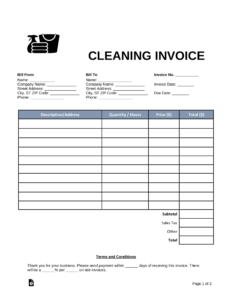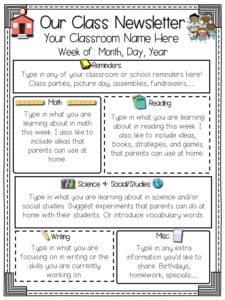Effective communication is crucial in any organization, ensuring that messages are disseminated accurately and promptly. However, as companies grow and teams expand, maintaining efficient communication channels becomes increasingly challenging. This is where a phone tree template can prove to be a valuable tool.
What is a Phone Tree Template?
A phone tree template is a structured framework that enables organizations to streamline their communication process by efficiently disseminating information to a large number of individuals. Also known as a call tree or phone chain, it is a hierarchical system that connects individuals within an organization, allowing for quick and effective communication.
Traditionally, phone trees were created manually by listing names and phone numbers on paper, creating a hierarchical structure. However, with the advent of technology, phone tree templates have become digital, allowing for greater flexibility and ease of use.
The Benefits of Using a Phone Tree Template
Implementing a phone tree template offers numerous benefits for organizations:
- Rapid Communication: A phone tree template ensures that important information reaches all relevant individuals quickly and efficiently. In emergency situations, this can be especially crucial for ensuring the safety and well-being of employees.
- Time and Cost Savings: By automating the communication process, organizations can save valuable time and resources. Instead of manually contacting each individual, a phone tree template allows for simultaneous communication, significantly reducing the effort required.
- Improved Efficiency: With a phone tree template, organizations can avoid the confusion and delays that can arise from miscommunication. By following a structured framework, information flows seamlessly through the hierarchy, minimizing the risk of errors.
- Flexibility and Scalability: Phone tree templates can be easily customized to suit the specific needs of an organization. As teams grow or change, the template can be updated accordingly, ensuring that communication remains efficient and effective.
Creating an Effective Phone Tree Template
Designing a phone tree template that caters to the unique requirements of an organization is essential for maximizing its effectiveness. Here are some key steps to consider:
Step 1: Identify Key Contacts
Determine the individuals who need to be included in the phone tree. This typically includes key personnel such as department heads, team leaders, and managers. It is important to ensure that the selected individuals are reliable and possess the necessary authority to disseminate information effectively.
Step 2: Define Communication Pathways
Establish the hierarchical structure of the phone tree, determining the order in which individuals will receive and pass on information. This structure should be logical and efficient, ensuring that messages are delivered promptly to the intended recipients.
For example, in a company with multiple departments, the phone tree may start with the CEO or top management, who then relay the information to department heads. The department heads subsequently inform their respective teams, creating a cascading effect.
Step 3: Gather Contact Information
Collect accurate and up-to-date contact information for each individual in the phone tree. This includes names, phone numbers, email addresses, and any other relevant details. It is crucial to regularly update this information to ensure its accuracy.
Step 4: Choose a Communication Platform
Select a communication platform that best suits the organization’s needs. This can range from traditional phone calls to voice messaging systems, text messages, or even dedicated communication software. Consider factors such as ease of use, reliability, and the ability to reach a large number of individuals simultaneously.
Step 5: Test and Review
Before implementing the phone tree template, conduct thorough testing to ensure its effectiveness. Simulate different scenarios and assess the speed and accuracy of communication. Make any necessary adjustments based on the outcomes of the testing phase.
Examples of Successful Phone Tree Implementations
Several organizations have successfully implemented phone tree templates to enhance their communication processes. Let’s explore two examples:
Example 1: Healthcare Facility
In a large healthcare facility, rapid and accurate communication is vital for patient care and staff coordination. By implementing a phone tree template, the facility ensures that critical information reaches the appropriate personnel promptly.
In emergency situations, such as code blue or code red alarms, the phone tree template enables the quick mobilization of medical staff. The template is designed to start with the charge nurse, who then contacts the department heads, who subsequently alert their teams. This efficient communication process minimizes response time and contributes to better patient outcomes.
Example 2: Educational Institution
An educational institution can face numerous communication challenges, particularly during unexpected events such as inclement weather or emergencies. By utilizing a phone tree template, the institution can promptly inform students, parents, and staff about closures or other important updates.
The phone tree template in this case starts with the principal, who then contacts the department heads or coordinators. They, in turn, communicate with the teachers or relevant staff members, who inform the students or parents. This structured approach ensures that everyone receives the necessary information without delay, facilitating smooth operations even in challenging circumstances.
The Role of Technology in Phone Tree Templates
Advancements in technology have revolutionized the way organizations implement and utilize phone tree templates. With the digitalization of communication, organizations can leverage various tools and platforms to enhance the efficiency and effectiveness of their phone tree templates.
Modern phone tree templates often utilize communication software that allows for automated messaging and tracking. These platforms enable organizations to send pre-recorded voice messages or text messages to a large number of recipients simultaneously, ensuring consistent and timely communication.
Integration with other communication tools, such as email or instant messaging platforms, further enhances the flexibility and reach of phone tree templates. This integration enables organizations to adapt their communication approach based on the preferences and availability of individuals.
The Importance of Regular Training and Updates
Implementing a phone tree template is not a one-time task. For it to remain effective, regular training and updates are crucial. Organizations should conduct training sessions to familiarize employees with the phone tree structure and educate them on the importance of accurate and timely communication.
Additionally, contact information within the phone tree template should be regularly reviewed and updated. New team members should be promptly added, and outdated information should be removed to ensure the accuracy and reliability of the phone tree.
Conclusion
A phone tree template is a powerful tool that can revolutionize communication within an organization. By streamlining the dissemination of information, it enhances efficiency, saves time and resources, and ensures that important messages reach the intended recipients promptly.
When creating a phone tree template, it is essential to consider factors such as the hierarchical structure, communication pathways, and the chosen communication platform. Regular training and updates are also critical for maintaining the effectiveness of the template.
By embracing technology and incorporating a well-designed phone tree template, organizations can overcome communication challenges, foster collaboration, and boost overall efficiency.
FAQs After The Conclusion:
1. Can a phone tree template be used for both emergency and non-emergency communication?
Yes, a phone tree template can be designed to cater to both emergency and non-emergency communication. The structure and pathways within the phone tree can be adjusted to ensure that different types of messages are conveyed effectively.
2. How often should a phone tree template be updated?
A phone tree template should be updated regularly to reflect any changes in personnel or contact information. It is recommended to review and update the template at least once every quarter or whenever there are significant changes within the organization.
3. Can a phone tree template be used in virtual or remote work environments?
Yes, a phone tree template can be adapted for virtual or remote work environments. Organizations can utilize communication platforms such as video conferencing tools, instant messaging apps, or project management software to ensure effective communication within the phone tree hierarchy.
4. How can a phone tree template improve crisis management?
A phone tree template plays a crucial role in crisis management by enabling rapid and accurate communication. During a crisis, such as a natural disaster or security incident, the phone tree ensures that the necessary information is disseminated quickly to relevant personnel, allowing for swift decision-making and response.
5. Are there any legal considerations when implementing a phone tree template?
When implementing a phone tree template, organizations should ensure compliance with applicable data protection and privacy laws. It is crucial to obtain consent from individuals before including their contact information in the phone tree template and to handle the information securely.





